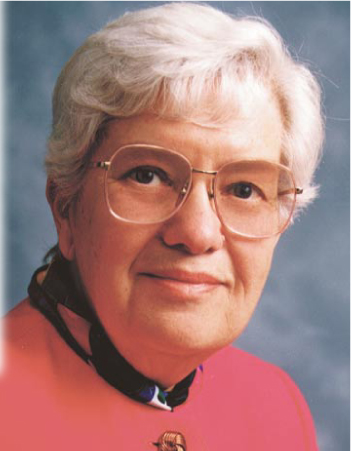ASP Names Award Winners for 2003
DOI: 10.1063/1.1611359
In October, the San Francisco-based Astronomical Society of the Pacific will present its annual awards during a ceremony in Emeryville, California.
Vera Rubin will receive the ASP’s highest honor, the Catherine Wolfe Bruce Gold Medal, which is given for a lifetime of outstanding research in astronomy and astrophysics. The society is acknowledging Rubin in part for her work on measuring the orbital velocities of gas and stars in galaxies—the first clear observational proof that most of the matter in the universe is dark. She is also being recognized for her research on the large-scale streaming of galaxies. She has “made a major impact on the way astronomers view the universe,” notes the society. Rubin is a senior fellow in the department of terrestrial magnetism of the Carnegie Institution of Washington in Washington, DC.
The Klumpke-Roberts Award, which recognizes outstanding contributions to the public’s understanding and appreciation of astronomy, will go to the Hubble Heritage Project Team of the Space Science Telescope Institute in Baltimore, Maryland. The team, led by astronomer Keith Noll, produces astronomical images from the Hubble Space Telescope. The society is honoring the team for its “creation of a spectacular collection of images for the purpose of education, public interest, and outreach [that] benefits both astronomy and science in general.”
Rodger Thompson and the Near Infrared Camera and Multi-Object Spectrometer (NICMOS) Instrument Definition Team at the University of Arizona, Tucson, will receive the Maria and Eric Muhlmann Award. According to the ASP, the NICMOS team has developed “innovative infrared technology that served not only the Hubble Space Telescope, but that also played a powerful role in the development of ground-based instruments and the Next Generation Space Telescope [since renamed the James Webb Space Telescope].” The award is given for outstanding contributions to the support and practice of observational astronomy.
The ASP will present its Thomas J. Brennan Award to Gene Zajac, teacher and planetarium director for the Shaker Heights City School District in Shaker Heights, Ohio. The society will honor Zajac for his teaching efforts, including the “development of a special summer science planetarium program for academically talented high-school students.” The society also notes that in his teaching, he “frequently uses innovative models, such as a Stonehenge made of Rice Krispies, and Oreo cookies to demonstrate lunar phases.” The award is given for outstanding contributions to the teaching of astronomy in grades 9–12.Daniel Reichart will receive this year’s Robert J. Trumpler Award, which is given to a recent PhD degree recipient in North America whose research is considered important to astronomy. Reichart’s thesis, done under the guidance of Donald Lamb Jr at the University of Chicago, focused on the connection between supernovae and gamma-ray bursts (GRBs) and has led astronomers “to the current consensus that most GRBs result from the explosive death of massive stars,” according to the society. Reichart is an assistant professor of physics and astronomy at the University of North Carolina at Chapel Hill.

PHILIP BIRMINGHAM

